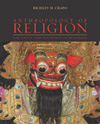
Religion and Social Order: Economics, Politics and Gender |  |
Chapter Summary- Religion influences and is influenced by its broader social and cultural contexts.
- Religious symbolism is influenced by the organization of society itself, including such organizational facts as the kind of sovereign groups in that organization.
- In societies that have no specialized political institution, religion can serve as an important mechanism of social control.
- In societies that have full-time governments, religion may provide support for the authority of government.
- In religiously heterogeneous societies, a shared system of religious beliefs and values, called a civil religion, may develop.
- Political efforts to support religion can make it more socially prominent without necessarily increasing individual participation or voluntary financial support for religion.
- In the simplest of societies, men and women typically have equal access to religious roles, but as societies grow socially more complex and particularly in societies with gender stratification, the religious roles of women may be subordinated to those of men.
- Gender relations in society are often a source of symbols and metaphors that are prominent in religious ideology and mythology.
- In gender stratified societies in which men monopolize religious ideology and rituals of the public religious organization, women sometimes play major roles in marginalized spirit possession cults as an alternative source of religious prestige and power.
- Religious practitioners of both sexes were most common in the shamanic religions of foraging societies and societies in which simple horticulture was practiced. In contrast, the role of priest in ecclesiastical religions tends very often to be dominated by male practitioners.
|
|
|